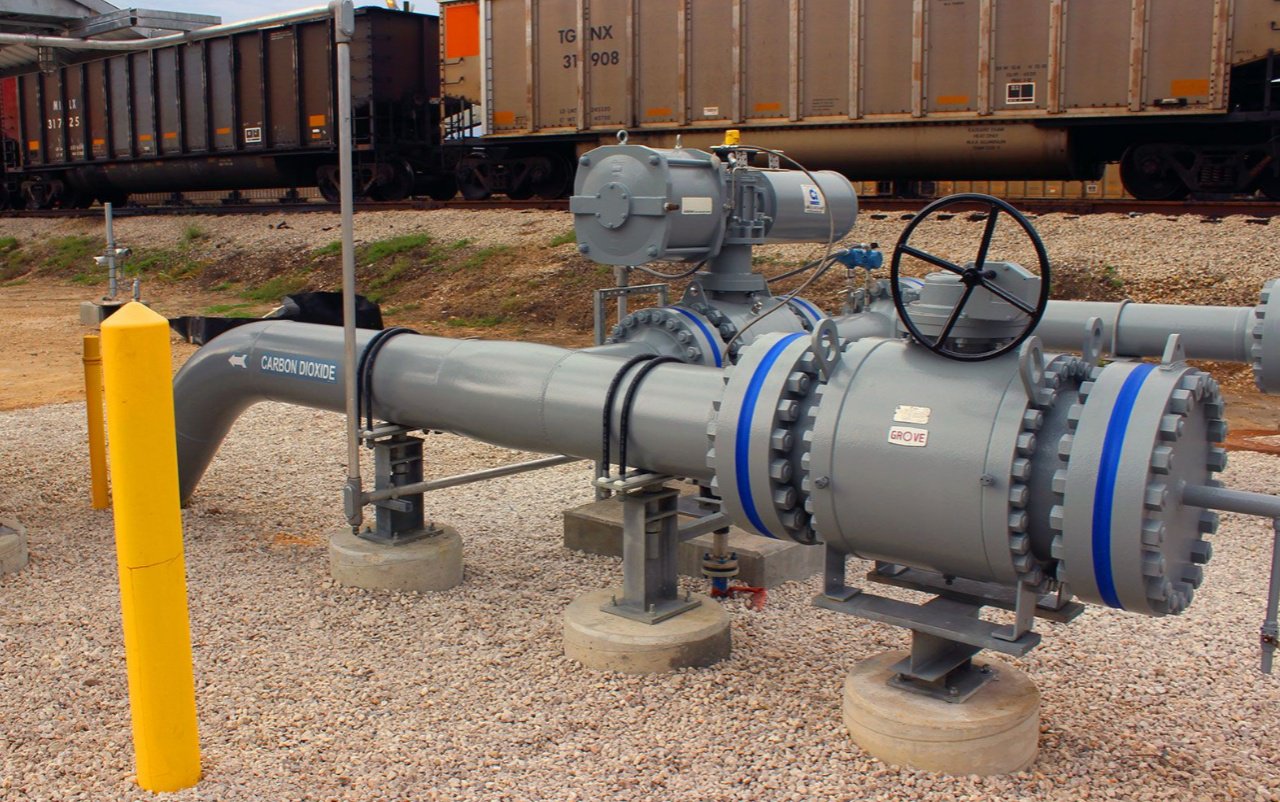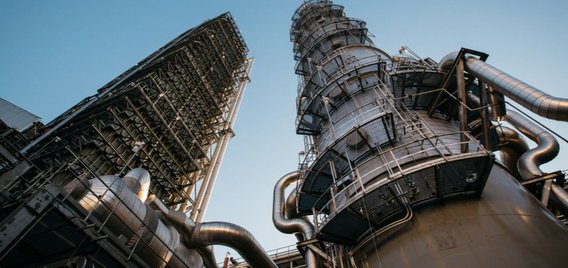Congress, DOE Continue Carbon Capture Push, But Utilities Wary

By Iulia Gheorghiu
May 25, 2018 - Carbon capture technology is touted as a way to reduce the emissions of fossil fuel burning power plants, but it comes at a high cost.
To spur investment in the technology, Congress passed in February an extension of a carbon capture tax credit, known as 45Q, as part of the budget. However, the tax incentive isn’t garnering enthusiasm from power generators, who say the technology is still too expensive and lack sufficient policy drivers to reduce their emissions.
This may be surprising, considering the breadth of support that the technology has garnered from the Trump administration for its application at coal-fired power plants, following President Donald Trump’s campaign promise to save coal.
The recent changes to the 45Q tax incentive, which had bipartisan support in Congress, removed a previous program cap of 75 million tons of stored carbon dioxide (CO2), making it more attractive for projects in development that could count on it being available for several years. Among other changes, Congress also extended the period of eligibility so that to qualify for the credit, construction must begin by January 1, 2024, for projects that would capture CO2, often injecting it into the ground for storage or enhanced oil recovery.
The bipartisan group of Senators, led by Sens. John Barrasso, R-Wyo., Sheldon Whitehouse, D-R.I., Shelley Moore Capito, R-W.Va., and Heidi Heitkamp, D-N.D., that championed the revision of 45Q are continuing to address challenges in the market implementation of carbon capture. The Senate Environment and Public Works Committee passed a new bipartisan bill May 22, meant to enhance carbon capture incentives, supporting research and collaboration in the development of CO2 pipelines and carbon capture facilities.
However, gas prices, which most analysts expect to remain low for the foreseeable future, are bad news for the prospects of carbon capture in the absence of any strong federal restrictions on carbon.
Some carbon capture experts say that given the growing state-level and shareholder interest in lowering emissions, many utilities will continue to consider the carbon capture proposition.
Plant owners could certainly look at the longer term benefits to reduce carbon emissions, “which can be mitigated through a post-combustion capture system,” Roger Ballentine, president of the consulting group Green Strategies, told Utility Dive.
As it stands, while other industries are interested in using the carbon capture incentive, utilities aren’t very interested in 45Q.
"I doubt you're going to see wholesale adoption of carbon capture at every coal plant in the country [because of the 45Q] but it is an enormous first step," Hunter Johnston, partner at Steptoe & Johnson and counsel to a proposed carbon capture and storage facility in Louisiana, told Utility Dive.
Southern Company will not be using 45Q, CEO Tom Fanning told Utility Dive in April, "or if we do, it will be very marginal."
Southern does not operate a carbon capture facility but has experience with the technology, including the abandoned coal gasification and carbon capture efforts at its Kemper County plant in Mississippi. Still, Fanning said carbon capture will remain a part of the company’s future.
The Energy Futures Initiative (EFI), a think tank established by former Energy Secretary Ernest Moniz, released a report May 23 about the expansion of the 45Q tax credit. The report identified several limitations to deploying carbon capture at coal or natural gas generation facilities. Primarily, the high cost of new or retrofitted carbon capture projects will likely exceed the value of the credits.
"Other market factors, such as facility age, configuration and performance, as well as market structures for cost recovery, also will limit applicability,” the EFI authors wrote.
If the 45Q does not entirely make up the cost of constructing a carbon capture system, electric utilities will have to wait for a better value proposition, such as a price on CO2 emissions that would drive the need for carbon capture.
Trying to Hold Back the Ocean
The Trump administration has pledged to bring back coal and increase the economic proposition of coal-burning power plants. But can carbon capture and other technologies return the country to a point where coal generated 40% of electricity?
Ballentine said that the administration’s efforts are futile.
"They’re trying to hold back the ocean, that’s not going to work," Ballentine said. "The market signals are too strong."

Carbon capture coal-burning plant infrastructure at Fort Bend County, Texas.
Photo by NRG Energy
Still, the Department of Energy (DOE) continues to fund research on commercial-scale storage of more than 50 million metric tons of carbon per site. For perspective, 45Q requires power utilities to capture a minimum of 500,000 metric tons of CO2 annually per project, which can be stored or utilized. Last fall, the DOE announced about $36 million of financial assistance for advanced carbon capture technologies.
On May 24, DOE announced that its Office of Fossil Energy selected three projects for cost-shared research to be managed by the National Energy Technology Laboratory. The projects will receive nearly $30 million in federal funding. Also on May 24, the DOE launched initiatives on carbon capture, utilization and storage (CCUS) and on nuclear innovation. The CCUS initiative will focus on building collaborative partnerships between the public and private sectors, calling the technology critical to reducing CO2 emissions from fossil-fueled power plants.
And on May 23, the DOE opened an inquiry into possible improvements to the country's fleet of coal-based power plants, with emphasis on making them more efficient, flexible and reliable.
"The ability to reduce the carbon emissions from a plant certainly is a de-risking factor, because I think most plant owners agree that the likelihood of some carbon control or carbon pricing is still very, very real," Ballentine said.
But, in leaving the Paris climate agreement, the Trump administration moved farther from such restrictions.
Due to the costly investment and lack of additional regulatory motivation to invest in the technology that would reduce the greenhouse gas, coal-plant operators aren’t expected to jump for the 45Q. Even if the technology is already proven.
Petra Nova: You Can Have It All
According to the Energy Information Administration (EIA), there are only two operating electricity generators in the world that use carbon capture and sequestration: Petra Nova, near Houston, Texas, and Boundary Dam plant in Saskatchewan, Canada.
Petra Nova is a joint venture between NRG Energy and JX Nippon Oil & Gas Exploration and serves as a success story for carbon capture in power generation. Petra Nova involved retrofitting a post-combustion CO2 capture system onto a 654 MW capacity unit of a coal-fired plant and transferring the captured CO2 to a nearby oil field for enhanced oil recovery.

Petra Nova project, retrofitted onto Unit 8 of WA Parish plant.
Photo by NRG Energy
The program is regarded as a success for stripping 90% of the CO2 emissions from a flue gas slipstream, which is about 33% of the total emissions from the WA Parish coal-fired plant’s unit, according to the EIA. The process itself is energy intensive.
Despite its success, the conditions of the plant are not easily replicated. First, it’s perfectly located next to oil fields that can use the captured carbon. Certain oil fields will react better to CO2 injections, increasing the amount of crude oil being extracted from the ground. This creates an additional way to monetize CO2, besides the 45Q credit.
One of the key considerations for power utilities looking at carbon capture will be "the ability to move that CO2 to an appropriate oil field," Ballentine said.
Second, Petra Nova is a merchant plant, without financing from ratepayers. Regulated generation facilities could still see these types of retrofits, but their case for such a big investment would likely be tainted by recent failures in the industry.
For instance, Mississippi Power abandoned plans to use carbon capture technology at its Kemper power plant in June 2017. The plant was meant to burn lignite coal along with natural gas. But it operated primarily as a combined-cycle natural gas plant after failing to implement its coal gasification process, which would reduce carbon emissions from the resource.
Kemper cost Mississippi Power, a subsidiary of Southern Company, a hefty amount, running behind schedule and with expected construction costs that reached $7.5 billion. State regulators allowed the utility to collect $112.6 million from ratepayers for the Kemper facility. Mississippi Power had sought to collect $200 million.
"Among those who haven’t analyzed the differences between the [CCS] plants to a significant degree, there was a lot of bad press and a lot of bad feelings around Kemper," Ballentine said. He added that the plant tested unique technology, whereas Petra Nova was scaling up proven technology for a commercial-scale.
Petra Nova’s circumstances made carbon capture ideal at a coal-fired power plant. But the technology, developed by Mitsubishi Heavy Industries America, can be applied to any post-combustion system at a fossil fuel plant, including oil and natural gas.
New Company Powered by 45Q
A new type of natural gas plant has been under construction in La Porte, Texas, sited there due to its proximity to oxygen pipelines. NET Power’s plant is a pilot for natural gas power generators that will use the oxy-combustion process and a closed supercritical CO2 loop to collect nearly pure CO2.
NET Power is a joint venture among 8 Rivers Capital, Exelon Generation and Chicago Bridge & Iron — which announced a merger with McDermott International earlier this month.
"To get further to a deep decarbonization in the electricity sector over the next several decades," the natural gas sector needs to be decarbonized in a cost effective way, said Ballentine, who serves on the board of 8 Rivers.
"One of the answers to that is going to be building gas plants on a zero emission basis from the get-go, using Allam Cycle technology," which is the proprietary technology that NET Power is using, Ballentine said.
The pilot is being made at a tenth of the size of the first commercial-sized oxy-combustion natural gas plant, which will collect 890,000 metric tons of CO2 a year, according to NET Power spokesman Walker Dimmig.
Dimmig said the commercial-sized projects from NET Power will be taking advantage of 45Q. Net Power estimates that their larger plants will be cost competitive the more traditional combined-cycle natural gas plants.
While the pilot is sited next to an oxygen pipeline for convenience, the commercial-sized plants can be sited anywhere by being outfitted with a cryogenic air separation unit. Dimmig said the company plans to monetize other byproducts of the cryogenic air separator as well, such as nitrogen.
Unlike the post-combustion or pre-combustion carbon capture systems, oxy-combustion strips CO2 a lot easier, by cooling down the gas and separating water from CO2. Therefore, it avoids having to separate gaseous molecules from the flue gas.
The question remains if low power prices would create sufficient economic incentives for natural gas plants with oxy-combustion carbon capture.
"Even gas plants are having trouble bidding on prices in some competitive markets," Steptoe’s Johnston said.
But NET Power believes their efficiency will be widely applied after the pilot plant’s technology is proven. In addition to selling byproducts from the air separation process, 45Q will help make their gas plants economically viable "even in some of the more depressed power markets," Dimmig said.
Experts have said that investing in technology to lower CO2 emissions in the power sector is not practical when those emissions are not being regulated.
"If you can put carbon in the atmosphere for free, why snap [CCS] on?" Howard Herzog, senior research engineer at the MIT Energy Initiative, told Utility Dive last year.
CoalZoom.com - Your Foremost Source for Coal News

